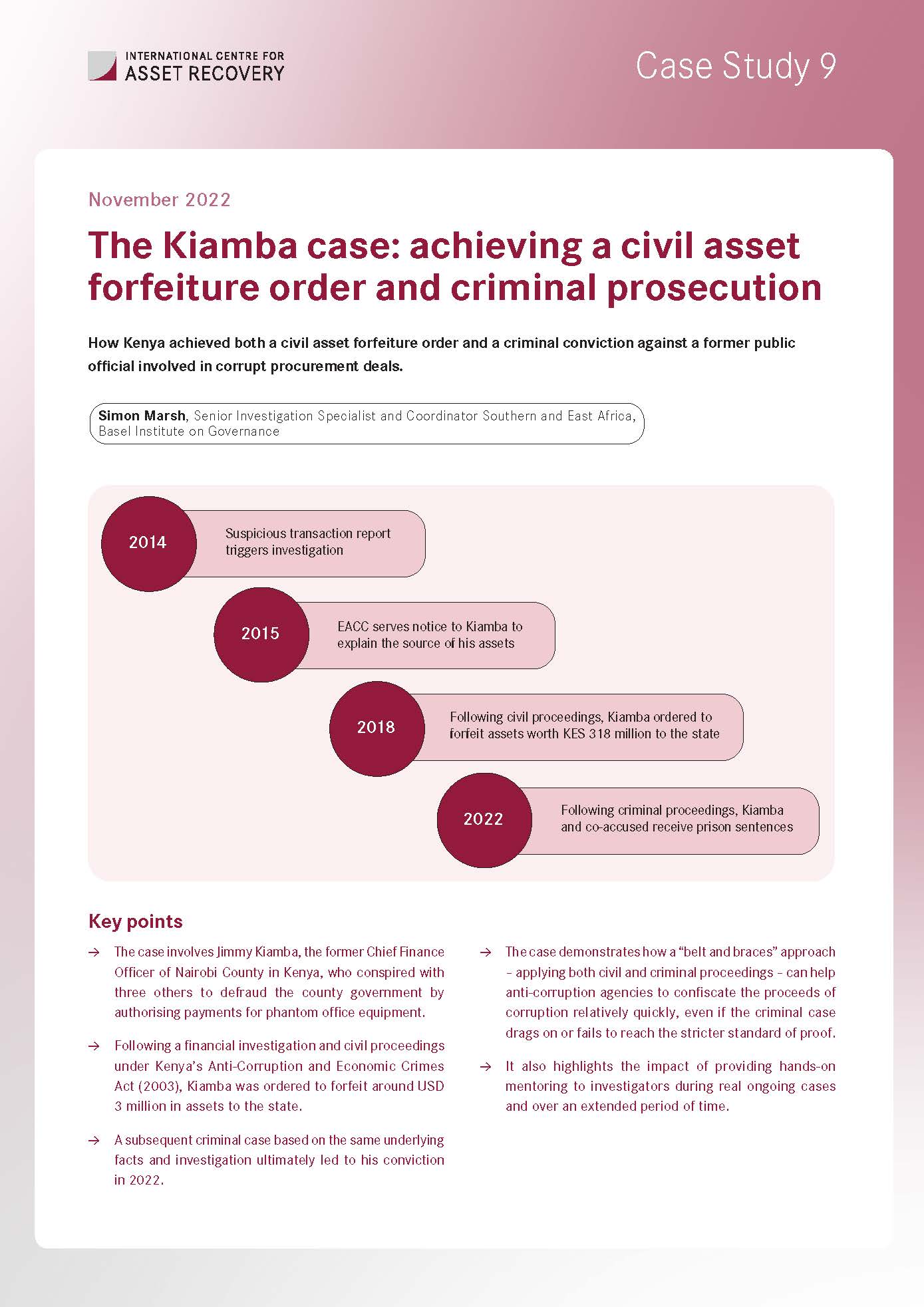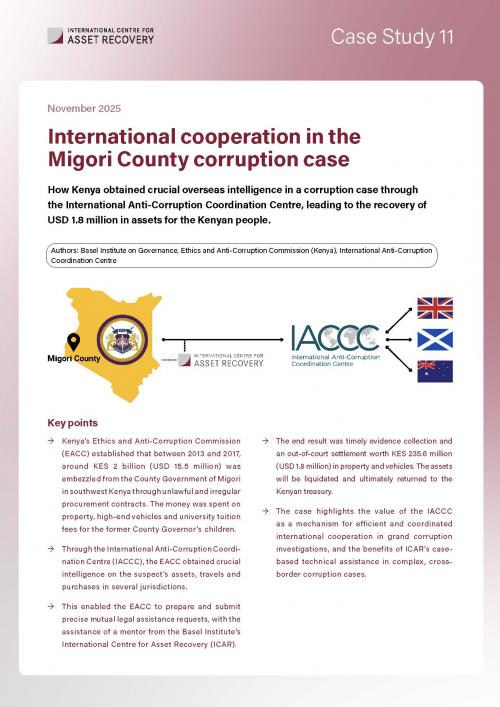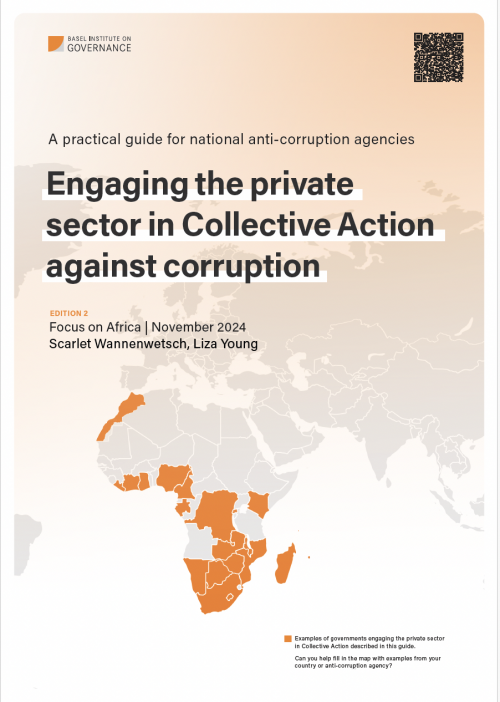Case Study 9: The Kiamba case: achieving a civil asset forfeiture order and criminal prosecution
This case study describes how authorities in Kenya achieved both a civil asset forfeiture order and a criminal conviction against a former public official involved in corrupt procurement deals.
The case involves Jimmy Kiamba, the former Chief Finance Officer of Nairobi County in Kenya, who conspired with three others to defraud the county government by authorising payments for phantom office equipment. Following a financial investigation and civil proceedings under Kenya’s Anti-Corruption and Economic Crimes Act (2003), Kiamba was ordered to forfeit around USD 3 million in assets to the state. A subsequent criminal case based on the same underlying facts and investigation ultimately led to his conviction in 2022.
The case demonstrates how a “belt and braces” approach – applying both civil and criminal proceedings – can help anti-corruption agencies to confiscate the proceeds of corruption relatively quickly, even if the criminal case drags on or fails to reach the stricter standard of proof. It also highlights the impact of providing hands-on mentoring to investigators during real ongoing cases and over an extended period of time.
Open-access licence and acknowledgements
This publication is part of the Basel Institute on Governance Case Study series, ISSN 2813-3900. It is licensed for sharing under a Creative Commons BY-NC-ND 4.0 licence.
The Case Study series offers practitioners insights into interesting and precedent-setting cases involving corruption and asset recovery. Many such cases are drawn from partner countries of the Basel Institute's International Centre for Asset Recovery.
Suggested citation: Marsh, Simon. 2022. “The Kiamba case: achieving a civil asset forfeiture order and criminal prosecution." Case Study 9, Basel Institute on Governance. Available at: baselgovernance.org/case-studies.
Links and other languages




